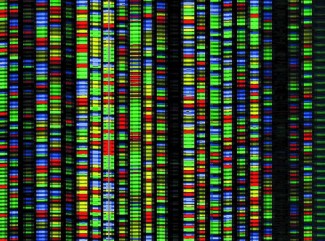The neuromuscular junction is a zone that enables transfer of information from the nervous system to muscles, and is affected in Amyotrophic Lateral Sclerosis. The team led by Edor Kabashi at the Institut du Cerveau – ICM focused on the role of acetylcholinesterase, an enzyme that targets the neurotransmitter acetylcholine, in changes that take place in the junction over the course of the illness.
Amyotrophic Lateral Sclerosis, or ALS, is a severe neurodegenerative illness characterized by progressive muscular paraplegia due to motoneuron degeneration in the primary motor cortex, brain stem and spinal cord. These specific neurons conduct information from the brain to muscles and enable movement. In the case of destruction, information is no longer transmitted to muscles, which progressively weaken and become atrophied. Currently, no treatment is available in large part because mechanisms leading to progressive motoneuron destruction are unknown.
One major hypothesis in ALS involves pathological changes in the neuromuscular junction in early stages of the disease, before motoneuron degeneration and before symptom onset. The neuromuscular junction is comprised of a motoneuron that transfers information to a muscle thanks to acetylcholine, a neurotransmitter. The contact zone between the neuron and muscle is called a synapse, said to be “cholinergic” because it uses acetylcholine as a neurotransmitter. A defect in the neuromuscular junction leads to paralysis or muscle weakness.
Once acetylcholine has fulfilled its mission and transferred the necessary information, it is degraded by the enzyme acetylcholinesterase. This enzyme is also thought to play a role in neural development.
Malfunction of the cholinergic system, involving the synapses that use acetylcholine as a neurotransmitter, has been highlighted in many neurodegenerative illnesses including Alzheimer’s disease, Parkinson’s disease, Lewy body dementia, and Huntington’s disease. Acetylcholinesterase has been the focus of a lot of attention as a potential therapeutic target. Molecules that prevent acetylcholinesterase action, that increase availability and quantity of acetylcholine within the synapse, partially alleviate cognitive and functional symptoms in these diseases.
Involvement in ALS remains rather unknown. Loss of cholinergic synapses has been observed in certain sporadic ALS cases. Additionally, muscular biopsies in patients with ALS revealed a decrease in acetylcholinesterase levels in muscles and an increase in enzyme levels in the bloodstream. These changes may reflect neuromuscular junction malfunction.
More thorough exploration of cholinergic deficit in genetic models for ALS may shed new light on the disease mechanisms and be used as an early diagnostic biomarker.
Sources
https://institutducerveau-icm.org/en/parkinson-2/
Campanari ML, García-Ayllón MS, Ciura S, Sáez-Valero J, Kabashi E. Front Mol Neurosci. 2016 Dec 27







